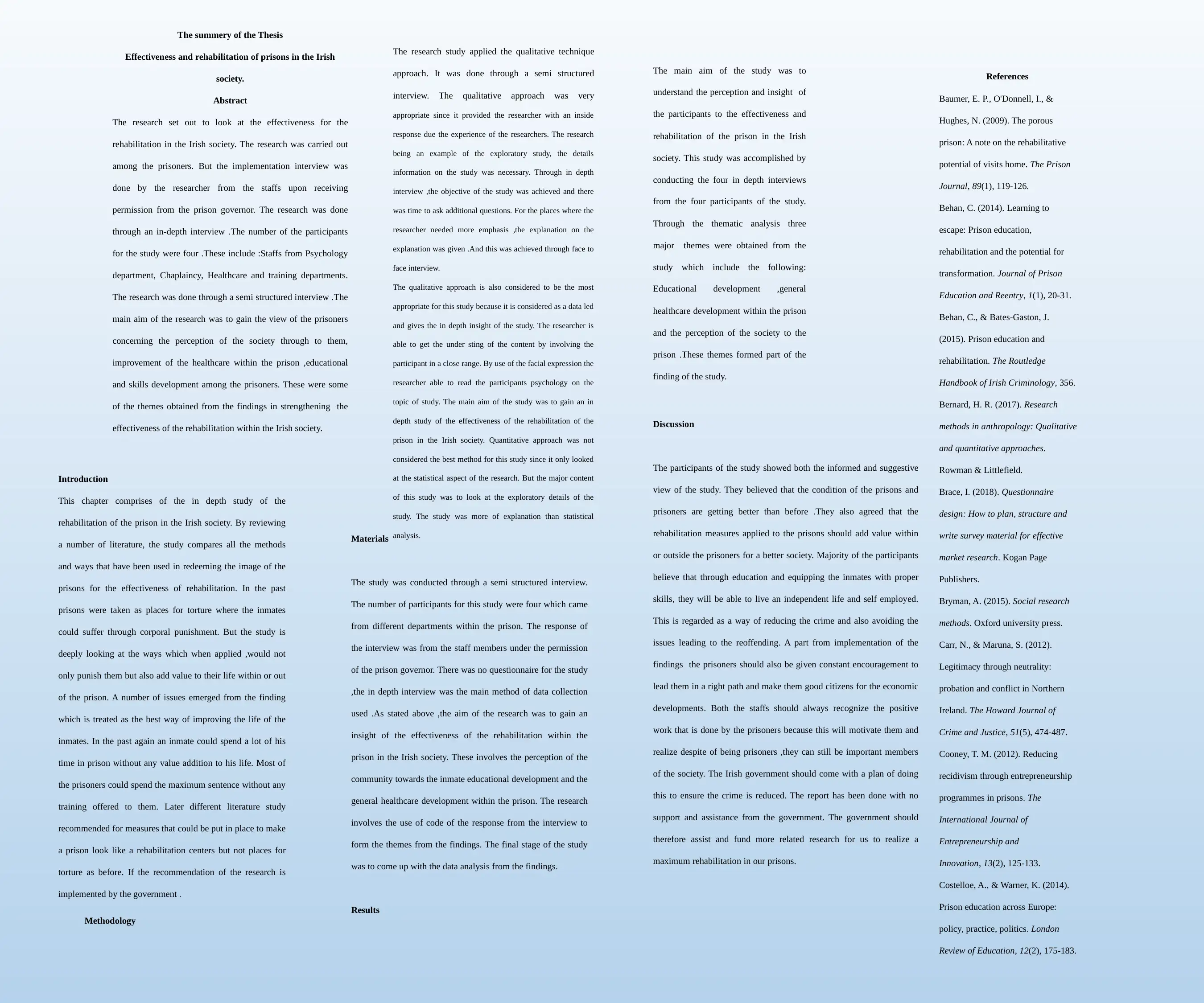Effectiveness and Rehabilitation of Prisons in Irish Society
VerifiedAdded on 2023/06/13
|1
|1383
|186
AI Summary
The research study applied the qualitative technique to understand the perception and insight of the participants to the effectiveness and rehabilitation of the prison in the Irish society. The study was conducted through a semi-structured interview with four participants from different departments within the prison. The aim of the research was to gain insight into the effectiveness of rehabilitation within the prison in the Irish society, including the perception of the community towards the inmate educational development and the general healthcare development within the prison.
Contribute Materials
Your contribution can guide someone’s learning journey. Share your
documents today.
1 out of 1







![[object Object]](/_next/static/media/star-bottom.7253800d.svg)